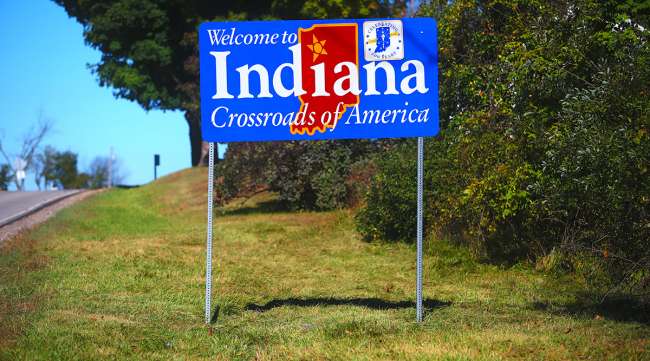Staff Reporter
Indiana Devotes $161 Million in Federal Funds to Rural Infrastructure Projects

The Indiana Department of Transportation announced March 28 that it is directing $161 million it received in federal funds to rural road, bridge and sidewalk projects.
The money will be divided among 66 towns, cities and counties, and funding will support 27 bridge rehabilitations or replacements, 31 resurfacing projects, six traffic safety projects and 17 Transportation Alternative Program projects, which encompass sidewalks, ramps and trails.
“Indiana is investing in transportation at record levels, and that includes more than just our highways,” INDOT Commissioner Joe McGuinness said. “Our sustained commitment to modernizing local roads and bridges, adding sidewalks and growing our trail networks sends a clear message that we’re building communities that are primed to attract and retain talent and spur job growth in the 21st-century economy.”
The $161 million in federal funds will be supplemented with local funds, creating $212 million for these infrastructure projects. INDOT spokesman Scott Manning explained that combining state and federal funding for local projects is a process that Indiana’s government goes through annually.
RELATED: Michigan governor calls for federal gas tax hike to fix state’s ravaged roads
“In Indiana, we set aside about one quarter of the federal highway dollars the state receives each year for local projects,” Manning said. “[Metropolitan Planning Organizations] distribute those funds in urban areas, and INDOT is responsible for awarding those funds to rural counties and smaller communities outside MPO areas.”
According to Manning, the $161 million represents the portion that INDOT awards to local agencies outside MPO areas.
Communities pay at least 20% in matching funds to receive federal funding. Rural communities submitted applications to INDOT for this round of funding in October 2017.
Some counties received funding for more than one project. Hancock County received $20.4 million for four projects that include widening a bridge, adding lanes to two segments of roadway and installing crash attenuators to bridges as safety measures. Hancock County is about 20 miles east of Indianapolis.
Hancock County Highway Engineer Gary Poole said county officials are in the process of developing design details and obtaining environmental permits for the projects. He said the added capacity is necessary to accommodate the increased traffic the area has seen.
“We’re excited about it. We’re building a lot of infrastructure, and a lot of industry is moving into the area,” Poole said. “We’re doing a lot of haul in and out of there right now, and we’re trying to make it more friendly for truck traffic. They’re some of our better drivers, but they need a lot of room, and we’re trying to provide that for them.”

Holcomb
This funding is part of the Next Level Roads program, Gov. Eric Holcomb’s initiative to boost Indiana’s economy through infrastructure investments. Next Level Roads devotes more than $30 billion over the next 20 years to road and bridge improvement projects. INDOT maintains more than 28,000 lane miles of highway and 5,600 bridges.
RELATED: Congress struggles to identify funding for Trump’s infrastructure plan
“In Indiana, the Crossroads of America is more than a motto,” Holcomb said in INDOT’s press release. “It’s our mission.”
Rural communities receive a moderate amount of attention in President Donald Trump’s proposed infrastructure funding plan, which was released Feb. 12. The proposal calls for $1.5 trillion in infrastructure investments over 10 years.
Overall, $200 billion in direct federal funds would be sought to achieve the plan’s desired top line. From that, $50 billion would be allocated for rural projects through block grants to governors. Another $100 billion would be made available for an incentives program for states and municipalities, $20 billion would be dedicated for a “transformative projects program” for futuristic contrivances, $20 billion would be used to enhance federal credit programs and broaden the use of private activity bonds and $10 billion would back the creation of a Capital Financing Fund.




